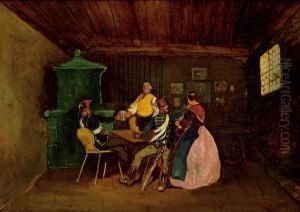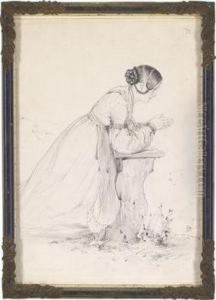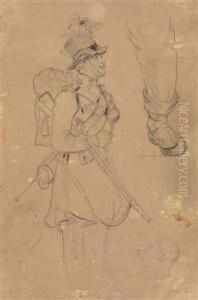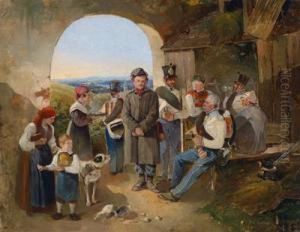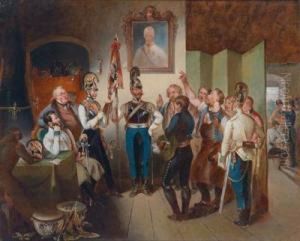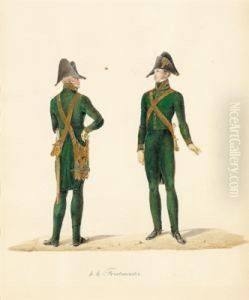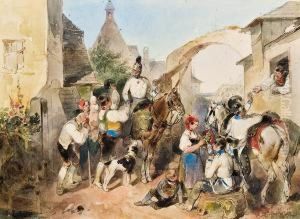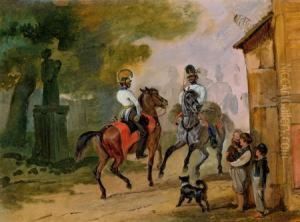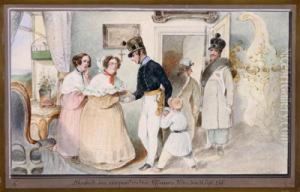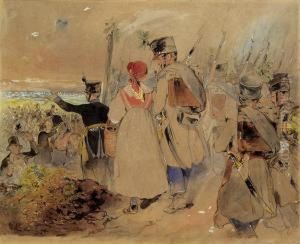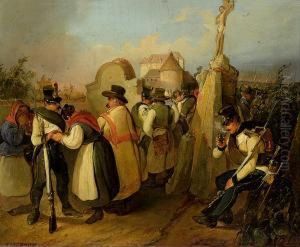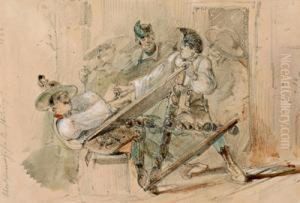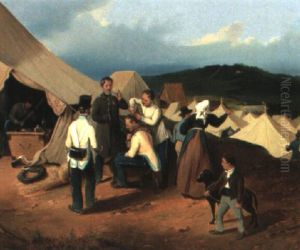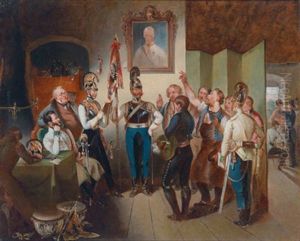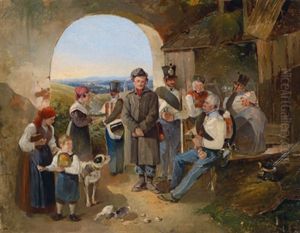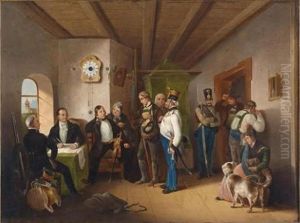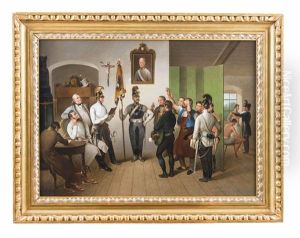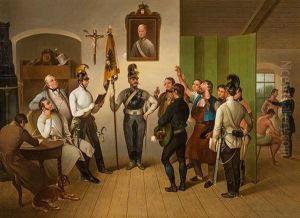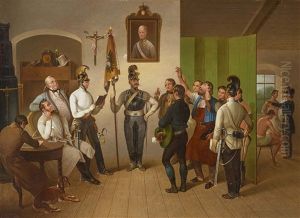Carl Schindler Paintings
Carl Schindler, an Austrian artist, lived a short but impactful life, spanning just 21 years from 1821 to 1842. Born in Vienna, Austria, Schindler showcased a prodigious talent in the arts from an early age, a time when the European art scene was bustling with Romanticism and the initial stirrings of Realism. Despite the brevity of his life, Schindler managed to leave a mark through his distinctive style and approach to painting and drawing.
Schindler's upbringing in Vienna, a cultural and artistic hub of the 19th century, provided him with a fertile ground for developing his artistic talents. He was exposed to a rich tradition of European art, deeply influenced by the Romantic movement, which was characterized by an emphasis on emotion and individualism as well as glorification of the past and nature. This influence is evident in his works, which often depicted historical scenes, landscapes, and everyday life with a romantic flair.
During his career, Schindler received training at the Academy of Fine Arts Vienna, where he honed his skills and developed a keen eye for detail. His works were known for their vivid realism and emotional depth, attributes that won him accolades and recognition among his peers and art aficionados of his time. Despite the promising start to his career, Schindler's life was cut short when he died at the age of 21. The cause of his early death remains a subject of speculation, with some sources suggesting ill health, while others hint at the harsh economic and living conditions faced by artists of his era.
Schindler's legacy, though not as widely recognized as some of his contemporaries, has endured in the art world. His works continue to be studied and admired for their beauty, emotional resonance, and historical value. They provide a window into the artistic trends and societal conditions of early 19th-century Vienna. Carl Schindler's contribution to the arts, though brief, remains a testament to the enduring power of talent and passion in the face of life's adversities.
